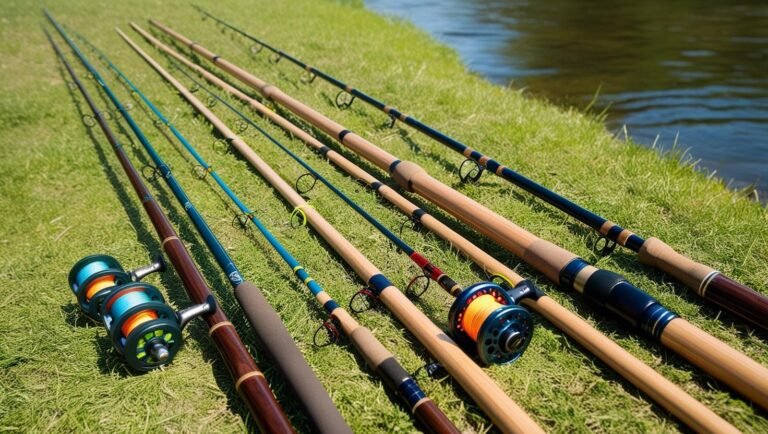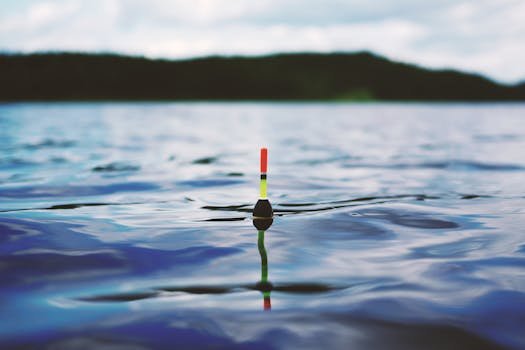Lure Color Science: How Fish See Lures Underwater (Depth & Visibility Guide)
Unraveling the Mystery: What Colors Do Fish Really See?
Have you ever stood in a tackle shop, staring at walls of vibrant lures, wondering which color is truly the “secret weapon”? We all have our favorites – that lucky red crankbait, or a bright yellow spinner. Many anglers have strong beliefs about lure color, often passed down through generations. But what if I told you that much of what we believe about how fish see those colors underwater is… well, a bit of “hooey”?
It’s true. The science of how light behaves in water is surprisingly complex, and it radically changes how your prized lure actually appears to a fish compared to how it looks in the air. As a lure maker and fellow angler, my goal is to peel back the curtain on this underwater phenomenon. Let’s explore the real science behind fish vision and light, so you can make smarter lure choices and truly outsmart your next catch.
Table of Contents
The Underwater Light Show: More Complex Than You Think
When sunlight hits the water, it doesn’t just pass through perfectly. A good chunk of it is immediately reflected away or absorbed right at the surface. What does penetrate into the water column then faces a rapid decline. Think about it:
- Barely Below the Surface: Just half an inch (1 centimeter) underwater, about 25% of the surface light is already gone!
- Shallow Depths: Dive down to just 3 feet (1 meter), and you’ve already lost more than half the surface light – only 45% remains to illuminate your world (or your lure).
- Going Deeper: By the time you hit 33 feet (10 meters), a staggering 78% of the surface light has vanished, leaving a mere 22% to light up a lure.
Many of our favorite lures can easily dive much deeper than 10 meters, illustrating just how dramatically light availability changes with depth. This isn’t just about brightness; it fundamentally alters how colors are perceived.
It’s Not Just About Their Eyes: Light Availability is Key
Here’s a crucial concept: A fish can only see colors based on the light wavelengths available to them at their depth. It doesn’t matter what amazing vision a fish has if the specific light wavelength needed to see “red” isn’t present.
Imagine trying to pick out the color of a shirt in a pitch-black room. You can’t, right? It’s the same for a fish. If the water has absorbed all the red light, even a fish with perfect red vision won’t see a red lure as red.
The Disappearing Act: How Colors Fade with Depth
Light is made up of a spectrum of colors, each corresponding to a different wavelength. When white light (which contains all visible colors) enters water, some of these wavelengths are absorbed much faster than others. And here’s the kicker: it’s the longer wavelengths (like reds, oranges, and yellows) that get absorbed first. The shorter wavelengths (greens and blues) penetrate deeper.
Under “perfect conditions” (think clear, tropical ocean water with the sun directly overhead), light penetration can be surprisingly deep. But let’s be realistic – we’re usually fishing in freshwater lakes or near-shore coastal areas, where conditions are rarely “perfect.”
In a typical clear freshwater lake, here’s roughly how deep different colors can penetrate before they’re mostly gone:
- Red: Approximately 5 meters (16 feet)
- Orange: Around 8 meters (26 feet)
- Yellow: About 15 meters (50 feet)
- Green: Can reach around 25 meters (82 feet)
- Blue: Can get down to about 35 meters (115 feet)
What That Means for Your Lure (and Your Catch!)
Picture a multi-colored lure as it descends:
- At 5-6 meters (16-20 feet), the red parts of your lure will start to appear gray to a fish.
- Go a bit deeper, to 9-10 meters (30-33 feet), and the oranges will disappear, also appearing gray.
- Around 25-26 meters (82-85 feet), even yellows will fade to gray.
- By 35-40 meters (115-130 feet), your lure will likely look entirely gray, regardless of its original vibrant colors!
So, that flashy, rainbow-colored lure that looks amazing in your hand will look completely different at various depths, as its colors literally disappear into the water column.
Beyond Clear Water: Other Factors That Muddy the View
The penetration depths we just discussed are for ultra-clean water under ideal conditions. But real-world fishing rarely offers such perfect clarity. A host of other factors further reduce light penetration and blur the underwater color palette:
- Plankton Growth: Microscopic organisms in the water scatter light.
- Turbidity: Dirty water, suspended silt, or even bubbles from prop wash significantly reduce clarity.
- Dark Colored Water: Tannins from decaying vegetation can stain the water, absorbing light quickly.
- Angle of the Sun: Midday sun penetrates best; early morning or late afternoon sun at a low angle means less light gets in.
- Waves and Ripples: A choppy surface reflects more light away and scatters what enters.
- Overhanging Structures: Bridges, lily pads, or shoreline vegetation create significant shadows.
Interestingly, many fish species are known to prefer lurking in these very dark and shady places, and often bite best during low light periods like dawn and dusk. This reinforces the idea that bright colors aren’t always necessary for attraction.
Practical Takeaways: Choosing Lure Colors That Work
Knowing that every lure color’s visibility is affected by water depth and clarity, how does this change your lure selection strategy?
- Avoid Red and Orange for Deep Water: Since long wavelength light (red, orange) doesn’t penetrate very deeply, even in clear water, these colors will simply appear gray to fish when fished deep (e.g., with deep-diving crankbaits or when trolling in significant depths). Save your reds and oranges for shallower applications!
- Embrace Greens and Blues for Depth: If you’re targeting fish in deeper water, consider lures with more greens and blues. These wavelengths penetrate furthest and will maintain their true color longer.
- Contrast is King: In dirty or low-light conditions, or at significant depths, contrast often becomes more important than specific color. Dark lures silhouetted against lighter water (or vice-versa) can be highly effective. Black, purple, or dark blue can stand out.
- When Brights Shine: The amount of lure color variety you need is far greater for shallow, clear water applications in the middle of the day. This is when fish can truly appreciate the full spectrum of your lure’s colors.
- Don’t Forget Confidence: While science helps, confidence in your lure choice can still play a role. If you believe in a certain color, you’ll likely fish it more effectively! Just know its limitations.
Put Science to Work for Your Next Catch!
Understanding how light truly behaves underwater isn’t just fascinating; it’s a powerful tool in your angler’s arsenal. By recognizing which colors disappear at different depths and how environmental factors impact visibility, you can make more informed lure choices. So next time you’re on the water, think about the light, think about the depth, and choose a lure color that the fish can actually see – and get ready to reel in more success!
Read What Are the Best Fishing Rod Brands for Beginners? 2025 Guide!




